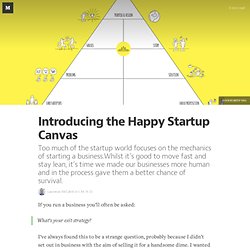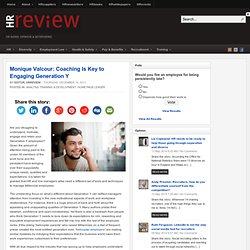

Happiness as Your Business Model. Happystartup-toolkit. Happystartup-ebook. Introducing the Happy Startup Canvas — I. M. H. O. If you run a business you’ll often be asked: What’s your exit strategy?

I’ve always found this to be a strange question, probably because I didn’t set out in business with the aim of selling it for a handsome dime. I wanted to take control of my life, do things my way and ultimately build a business in my image. The thought of creating something you’re proud of, only then to hand it over when a good offer comes in doesn’t sit well with me. Likewise chasing investors early on and giving away equity before you’ve found any passionate customers.
“When you take money from investors their business model becomes yours.”Steve Blank Startup founders should be creating companies so that they can live according to their own rules, not someone else’s – especially investors or shareholders. Whilst there will always be entrepreneurs that set out with the aim of a $10bn IPO, there is a growing movement of people that are starting out in business for reasons other than money.
“Death” 1. 2. 3. 1. Monique Valcour: Coaching Is Key to Engaging Generation Y. Are you struggling to understand, motivate, engage and retain your Generation Y employees?

Given the amount of attention being paid to the under-30 members of the work force and the persistent hand-wringing over their supposedly unique needs, qualities and expectations, it is taken for granted that HR and line managers alike need a different set of tools and techniques to manage Millennial employees. The unrelenting focus on what’s different about Generation Y can deflect managers’ attention from investing in the core motivational aspects of work and workplace relationships. For instance, there’s a huge amount of back and forth about the appealing and unappealing qualities of Generation Y. Many authors praise their idealism, confidence and open-mindedness. Yet there is also a backlash from people who think Generation Y needs to tone down its expectations for rich, rewarding and enjoyable employment experiences and fall into line with the rest of the employee ranks.
Peut-on mesurer le bonheur ? Réflexions sur les indicateurs de bien-être. La mesure du bonheur est un problème qui a été posé dès la naissance de l'économie classique. Comme le rappelle Annie L. Cot : « avec Jeremy Bentham, l'économie politique trouve une ambition pour deux siècles à venir : la volonté, héritée des lumières, de faire advenir une société transparente et rationnelle, ordonnée sur la base du double principe de l'intérêt individuel et du plus grand bonheur pour le plus grand nombre » [1]. La doctrine utilitariste à travers le calcul des peines et des plaisirs constitue un fondement de la théorie marginaliste qui elle même a produit les outils de raisonnements de l'analyse néoclassique contemporaine. Toutefois, avec l'essor de la macroéconomie et la mise en place d'agrégats de comptabilité nationale, les économistes ont orienté leurs réflexions vers les explications de la croissance économique et des fluctuations cycliques.
Happylab - Le laboratoire du bonheur. Happylab Magazine » Fabrique Spinoza - Accueil » Fabrique Spinoza.
Rapport - mesure des performanches économiques et du progrès social. Diversité au travail. Ethique. Paternalisme. Santé et Sécurité au travail. Économie du bien-être. Un article de Wikipédia, l'encyclopédie libre.

L’économie du bien-être est une branche de l'économie qui s'intéresse à la définition et à la mesure du bien-être social, ainsi qu'au cadre d'étude à partir duquel sont conçues les politiques publiques[1]. Elle cherche principalement à répondre à la question :« Entre plusieurs situations économiques possibles - chaque situation étant caractérisée par la façon dont sont réparties les ressources et les revenus, laquelle est la meilleure ?
» [2]. « La mort de l'économie du bien-être a souvent été proclamée[3], non parce que les questions qu'elle traite seraient inutiles ou superflues, mais parce que les outils qu'elle propose peinent à répondre aux questions soulevées. Mais les pistes ouvertes par ses développements récents semblent pouvoir repousser les limites auxquelles se heurtaient les travaux fondateurs » [4] L'approche fondatrice[modifier | modifier le code] L'héritage utilitariste[modifier | modifier le code] En 1947, Paul A.